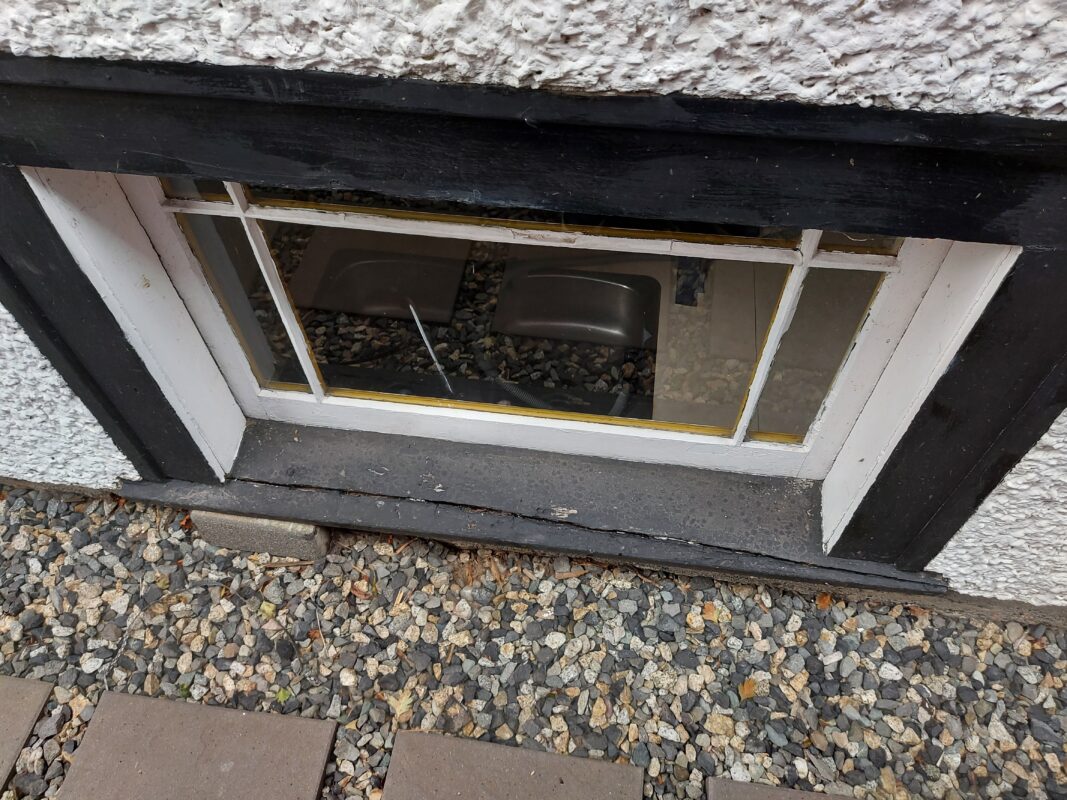Why Trim Board Rot Happens First: A Closer Look at Vulnerable Exterior Woodwork
Trim boards are the finishing touches of a home’s exterior—often found around windows, doors, fascia, and rooflines. While they serve a decorative purpose, they also play a role in protecting the structure from the elements.
Unfortunately, these exposed areas are also some of the first to show signs of deterioration. Trim board rot is one of the most common issues homeowners face, and if left untreated, it can lead to more extensive—and expensive—damage.
In this blog, we’ll take a closer look at why trim board rot happens first, where it’s most likely to develop, how to spot the early signs, and what you can do to prevent or repair it before it affects the rest of your home.
What Is Trim Board Rot?
Trim board rot refers to the decay or deterioration of exterior trim boards—typically the wood used around windows, doors, fascia, and roof edges. While general wood rot can affect any exposed wooden surface, trim boards are particularly vulnerable because they serve both a decorative and protective function and are located in areas where water commonly collects or seeps in.
What makes trim board rot different is how easily it goes unnoticed. Since these boards are often painted or caulked, surface-level damage can be hidden until the wood beneath is already soft, crumbling, or separating from the structure.
Despite their visual importance, trim boards are not structural components, which is why homeowners often overlook early signs of damage—until it spreads to nearby siding, framing, or even interior walls.
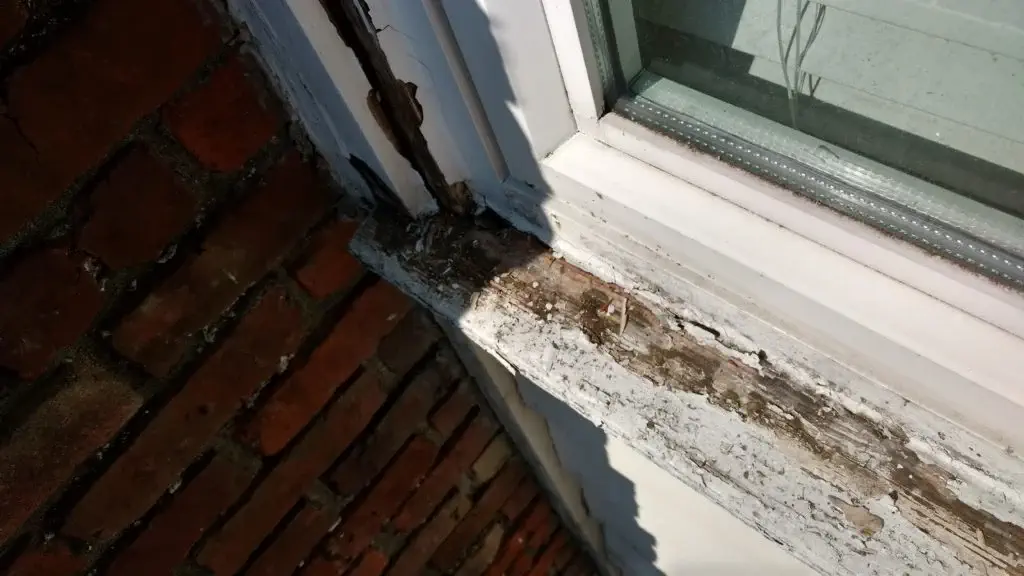
Why Trim Boards Are Vulnerable
There’s a reason trim board rot is one of the most common exterior wood issues—trim boards are often the first line of exposure to the elements and the first to suffer from moisture damage.
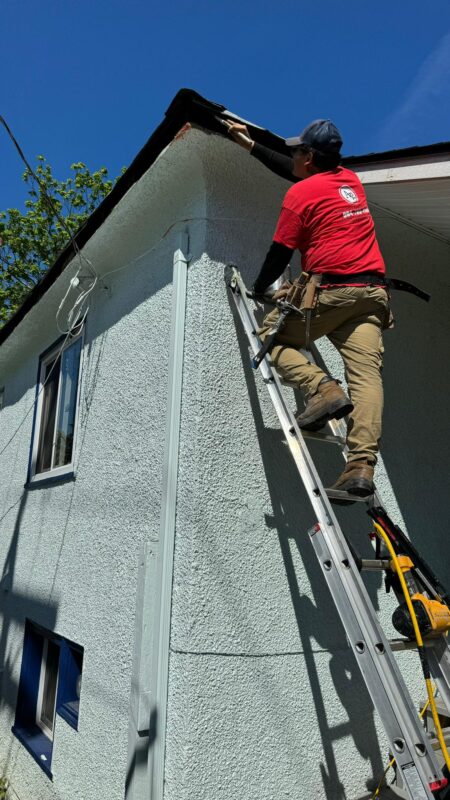
-
Constant exposure to rain, snow, and sun – Trim boards sit on the exterior of your home and take a direct hit from weather year-round. Over time, this constant exposure breaks down the protective finish and allows water to penetrate the wood.
-
Close proximity to rooflines, windows, and doors – These areas naturally collect and direct water runoff, making surrounding trim more likely to stay damp or experience water intrusion—especially if drainage isn’t ideal.
-
Improper sealing, caulking, or flashing – If trim boards aren’t properly sealed during installation, water can sneak in through gaps and begin to rot the wood from within, even if the surface looks intact.
-
Use of non-rot-resistant materials – Some trim boards are made from materials like untreated pine or MDF, which are more prone to soaking up moisture. These materials accelerate the chances of trim board rot if not properly protected.
Being aware of these vulnerabilities is key to catching issues early and extending the lifespan of your exterior woodwork.
Common Places to Find Trim Board Rot
Because trim boards are installed in highly exposed areas, they’re often the first to show signs of moisture damage. Knowing where to look can help you catch trim board rot early—before it spreads to surrounding structures.
Here are the most common spots where trim board rot tends to appear:
-
Window and door casings – These areas are frequent moisture traps, especially if caulking or flashing has failed. Water often seeps in around the edges and leads to soft or discoloured trim boards.
-
Fascia and soffits – Positioned just under the roofline, fascia and soffit boards are constantly exposed to runoff and humidity, making them especially prone to rot if not well maintained.
-
Decorative exterior trim – Features like crown moulding, corner boards, or gable trim add visual interest but can also collect moisture—especially in shaded or poorly ventilated areas.
-
Baseboards near decks or ground level – Trim located closer to the ground is exposed to splash-back from rain and snow, increasing the chances of water absorption and eventual rot.
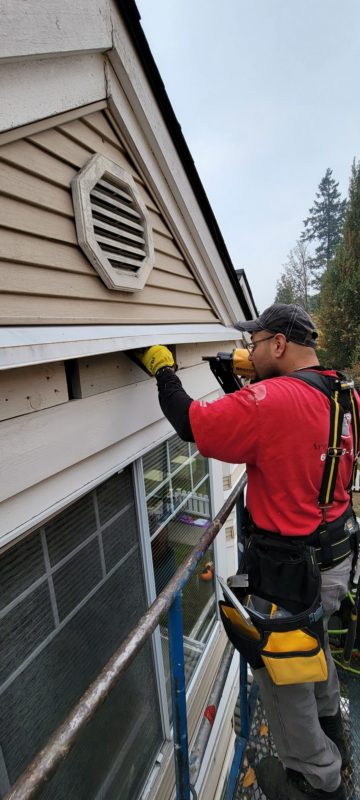
Regularly checking these areas for early signs of trim board rot can help prevent widespread deterioration and costly repairs.
Warning Signs of Trim Board Rot
Catching trim board rot early can save you from more invasive and expensive repairs. While the damage may not always be obvious at first glance, there are a few key indicators that something is wrong beneath the surface:

-
Soft or spongy wood – If the trim gives under gentle pressure or feels unusually soft, it’s a strong sign that moisture has compromised the wood.
-
Cracking or bubbling paint – When moisture gets trapped underneath the paint, it can cause it to lift or blister. This is often an early surface-level sign of trim board rot.
-
Discolouration or stains – Yellowing, grey patches, or dark streaks on the trim can signal water infiltration and developing rot underneath the finish.
-
Gaps or separation at joints – As the wood expands and softens, you may notice open seams or misaligned trim pieces where joints were once tight and clean.
If you notice any of these signs, it’s a good idea to have the area assessed promptly to prevent the rot from spreading to nearby materials.
How to Prevent Trim Board Rot
Preventing trim board rot is essential to maintaining the integrity and appearance of your home’s exterior. Here are key strategies to protect your trim boards:
-
Use Rot-Resistant or Treated Wood Products: Opt for materials like cedar, redwood, or pressure-treated lumber, which are naturally resistant to decay. These woods are less susceptible to moisture-related issues, making them ideal for exterior applications.
-
Apply Proper Caulking and Flashing: Seal all joints, seams, and edges with high-quality exterior caulk to prevent water infiltration. Additionally, install flashing around windows, doors, and rooflines to direct water away from vulnerable areas.
-
Keep Gutters and Downspouts Clear: Regularly clean and maintain your gutter system to ensure proper water drainage. Clogged gutters can lead to water overflow, which may saturate trim boards and promote rot.
-
Regular Maintenance and Repainting: Inspect your trim boards periodically for signs of wear or damage. Repaint or reseal them as needed to maintain a protective barrier against moisture. Consistent upkeep extends the lifespan of your trim and enhances your home’s curb appeal.
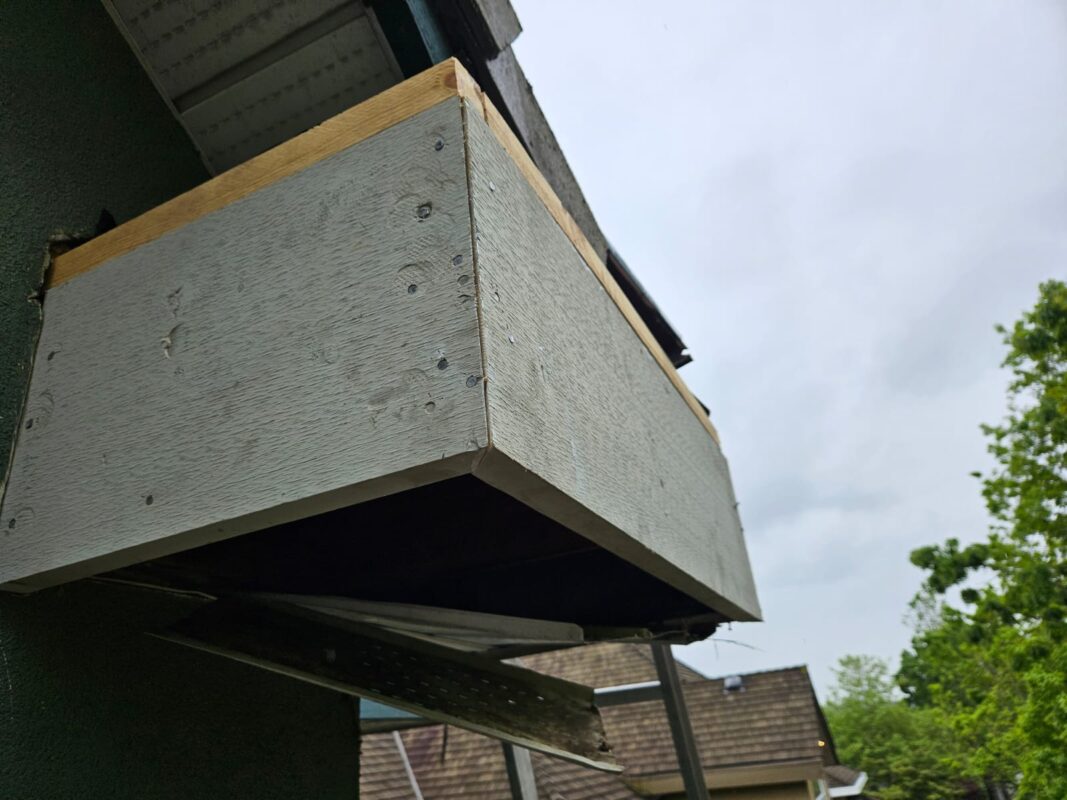
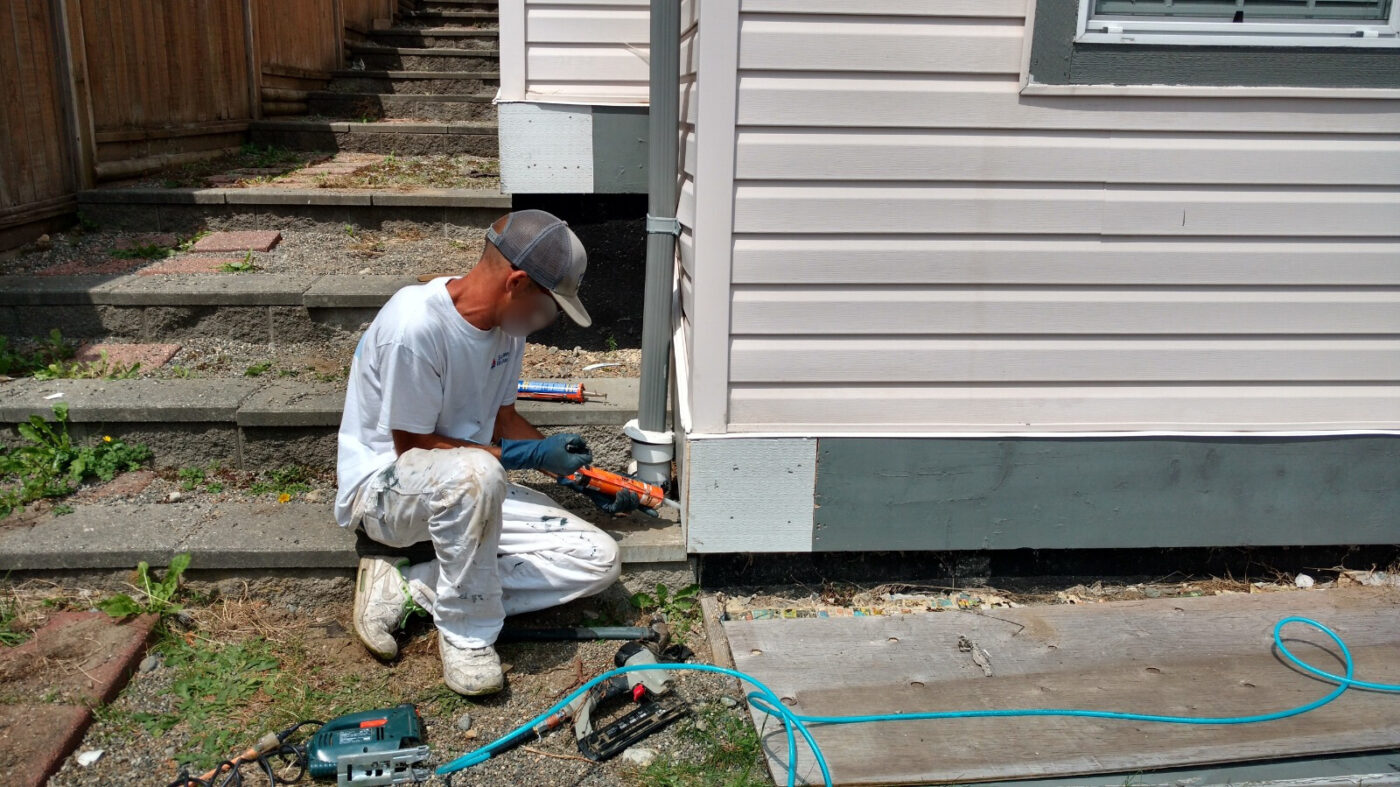
For more detailed guidance on preventing wood rot, including the importance of using quality materials and proper sealing techniques, you can refer to this article “Preventing and replacing dry rotted trim” by The Press Democrat
When to Repair or Replace Rotted Trim
Deciding whether to repair or replace damaged trim depends on the extent and location of the trim board rot. Acting quickly can prevent the damage from spreading to nearby materials or compromising the paint finish.
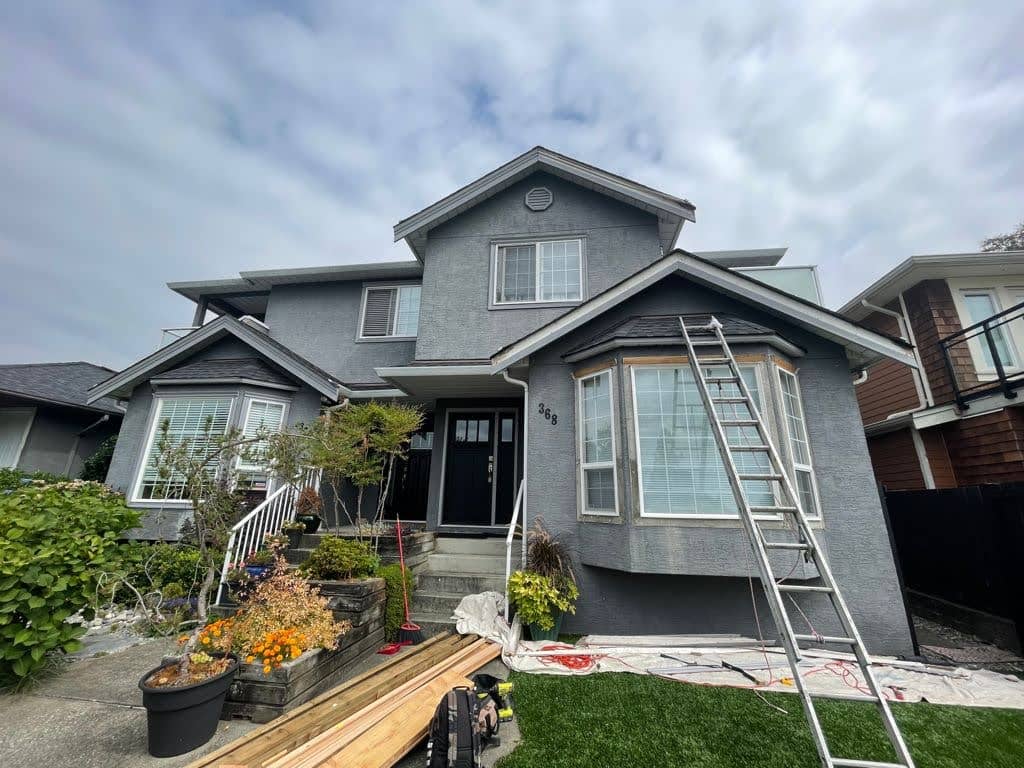
-
Small sections – If the rot is isolated and only affects a small area, a spot repair might be all that’s needed. This could involve cutting out the affected piece and replacing it with new, sealed wood, followed by repainting to blend it in.
-
Widespread or structural rot – When trim board rot is extensive, affects multiple areas, or is located near load-bearing components like framing or roof edges, full replacement is usually the best option. This ensures the integrity of the exterior is maintained and prevents further deterioration.
It’s also important to address any rot before repainting your home’s exterior. Painting over rotted trim may improve the look temporarily, but it won’t stop the decay—and the new paint will fail much sooner. Taking care of trim board rot before applying fresh paint ensures a longer-lasting, professional result.
Because of their constant exposure to the elements and placement around vulnerable areas like windows and rooflines, trim boards are often the first to suffer from moisture damage. That’s why trim board rot is such a common—and important—issue to address early.
Ignoring the signs can lead to widespread deterioration, costly repairs, and even damage to your home’s structure. Regular inspection, proper sealing, and timely repairs can go a long way in preventing rot and preserving your exterior’s integrity.

Call a Professional
If you suspect trim board rot or are planning to repaint your home, now is the time to act. Contact Argenta Restoration Ltd. for expert rot repair and exterior painting services that protect your home and keep it looking its best.

